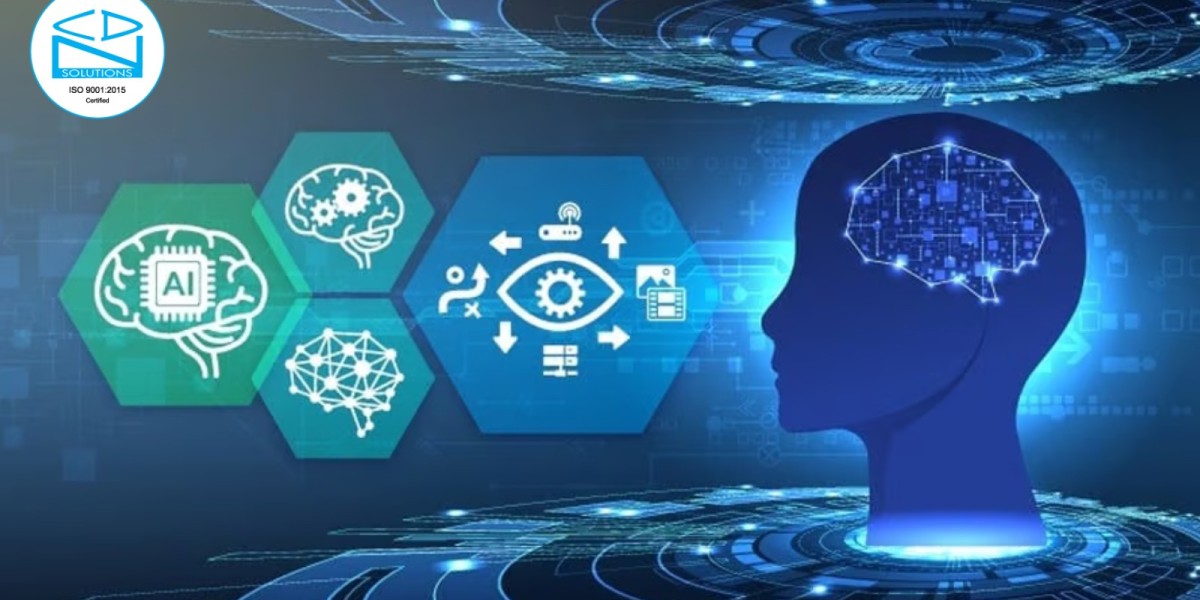Time series forecasting is a critical aspect of data analysis, enabling businesses to predict future trends based on historical data. With advancements in Artificial Intelligence (AI), especially in techniques like Recurrent Neural Networks (RNNs) and Long Short-Term Memory networks (LSTMs), forecasting has become more accurate and scalable. In this blog, we’ll explore the key techniques used in AI-driven time series forecasting and their transformative applications in industries such as finance and supply chain management.
Introduction to Time Series Forecasting
Time series forecasting refers to the process of predicting future values of a sequence based on historical observations. It is used to analyze data points collected or recorded at specific time intervals. The goal is to identify patterns, trends, and seasonality in the data to make informed predictions. Traditional forecasting methods like ARIMA (AutoRegressive Integrated Moving Average) have been widely used, but AI-based models have revolutionized this field by improving accuracy and efficiency.
AI Techniques for Time Series Forecasting
Recurrent Neural Networks (RNNs) RNNs are a class of artificial neural networks designed for sequence data. Unlike traditional neural networks, RNNs have connections that form cycles, which allow them to maintain a memory of past inputs. This makes them ideal for time series forecasting where each prediction depends on the previous time steps. The recurrent structure captures temporal dependencies effectively, making RNNs more powerful for dynamic data.
Application in Finance: RNNs are particularly useful for predicting stock prices, analyzing trends, and forecasting market demand. By considering the relationship between previous data points and future movements, RNNs can help financial institutions optimize their investment strategies and risk management processes.
Long Short-Term Memory Networks (LSTMs) LSTMs are a special type of RNN designed to address the problem of vanishing gradients that standard RNNs suffer from. LSTMs can learn long-term dependencies, making them more suitable for complex time series data. They consist of gates (input, forget, and output) that control the flow of information, enabling them to retain or forget information over longer periods.
Application in Supply Chain Management: In supply chain management, accurate demand forecasting is crucial for maintaining inventory levels, reducing waste, and optimizing production schedules. LSTMs can analyze historical data to predict future demand with higher accuracy, improving decision-making in inventory management, procurement, and logistics.
Convolutional Neural Networks (CNNs) for Time Series While CNNs are traditionally used for image recognition tasks, recent research has shown that they can be adapted for time series forecasting by extracting important features from raw data. CNNs can capture local patterns in the time series, which can be combined with RNNs or LSTMs for improved performance.
Application in Energy Forecasting: CNNs can be applied to forecast energy consumption in buildings and predict renewable energy generation from sources like solar and wind. Accurate forecasts help energy providers balance supply and demand more effectively.
Advanced Techniques: Hybrid Models
To further enhance forecasting accuracy, AI developers often use hybrid models that combine RNNs, LSTMs, and CNNs with other machine learning techniques like decision trees or ARIMA. These models can capture both short-term and long-term dependencies while considering non-linear relationships in the data.
AI Development Services for Time Series Forecasting Implementing these advanced AI models for time series forecasting requires expertise in data engineering, machine learning algorithms, and domain-specific knowledge. AI development companies offer tailored services that help businesses integrate AI into their forecasting workflows.
Here’s how AI development services can assist in building time series forecasting solutions:
- Custom AI Solutions: AI development companies can create custom models that are optimized for specific business needs, whether it’s predicting stock prices, demand in the supply chain, or energy usage.
- Data Processing Pipelines: Forecasting models require clean, structured, and preprocessed data. AI developers ensure seamless data ingestion, transformation, and feature engineering for time series datasets.
- Model Deployment and Maintenance: AI development services extend beyond model building; they include deploying the models into production environments, ensuring their scalability, and regularly updating them to improve accuracy as new data becomes available.
- Cloud Integration: Many businesses use cloud platforms to handle large datasets. AI developers can integrate forecasting models with cloud infrastructures for more scalable, cost-effective solutions.
Applications of Time Series Forecasting in Various Industries
Finance:
- Stock Price Prediction: AI models can predict stock movements by analyzing historical price trends, trading volumes, and other market signals, enabling traders to make more informed investment decisions.
- Fraud Detection: Time series forecasting can also be applied to detect abnormal patterns in transaction data, helping banks and financial institutions mitigate fraud risks.
Supply Chain Management:
- Demand Forecasting: AI can improve demand forecasting by considering factors like market trends, customer preferences, and seasonal changes. This helps businesses optimize inventory, reduce stockouts, and avoid overproduction.
- Logistics Optimization: Predicting delivery times, optimizing transportation routes, and improving warehouse operations are other key applications of AI-driven time series forecasting in supply chains.
Healthcare:
- Patient Health Monitoring: AI models can forecast patient health metrics, such as heart rate and blood pressure, enabling proactive healthcare measures and improving patient outcomes.
- Disease Outbreak Prediction: Time series forecasting models can analyze epidemiological data to predict potential disease outbreaks, allowing healthcare authorities to take preventive actions.
Retail:
- Sales Forecasting: Retailers use AI to predict future sales trends based on historical data and external factors like holidays and promotions. This enables better inventory management and marketing strategies.
Conclusion
AI-driven time series forecasting is transforming industries by providing more accurate and actionable insights from data. RNNs, LSTMs, and other AI techniques are making it easier to predict future trends, optimize processes, and make informed decisions. Partnering with an AI development company offers businesses access to the tools and expertise required to implement cutting-edge forecasting solutions.
By utilizing the right AI development services, businesses can unlock the full potential of time series forecasting and gain a competitive edge in their respective industries.


